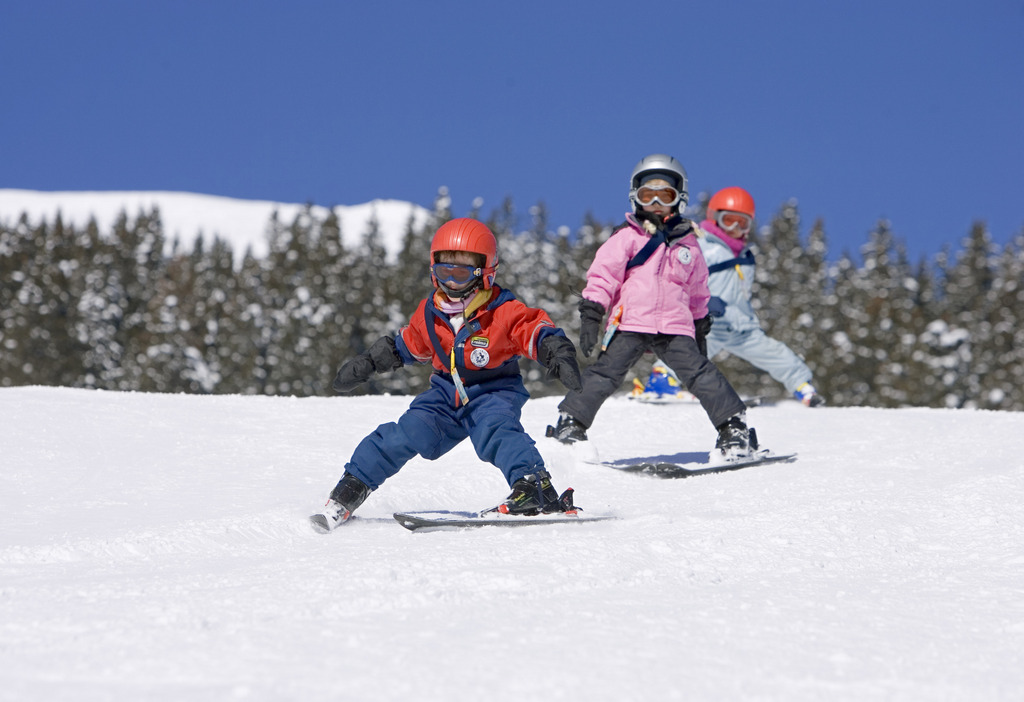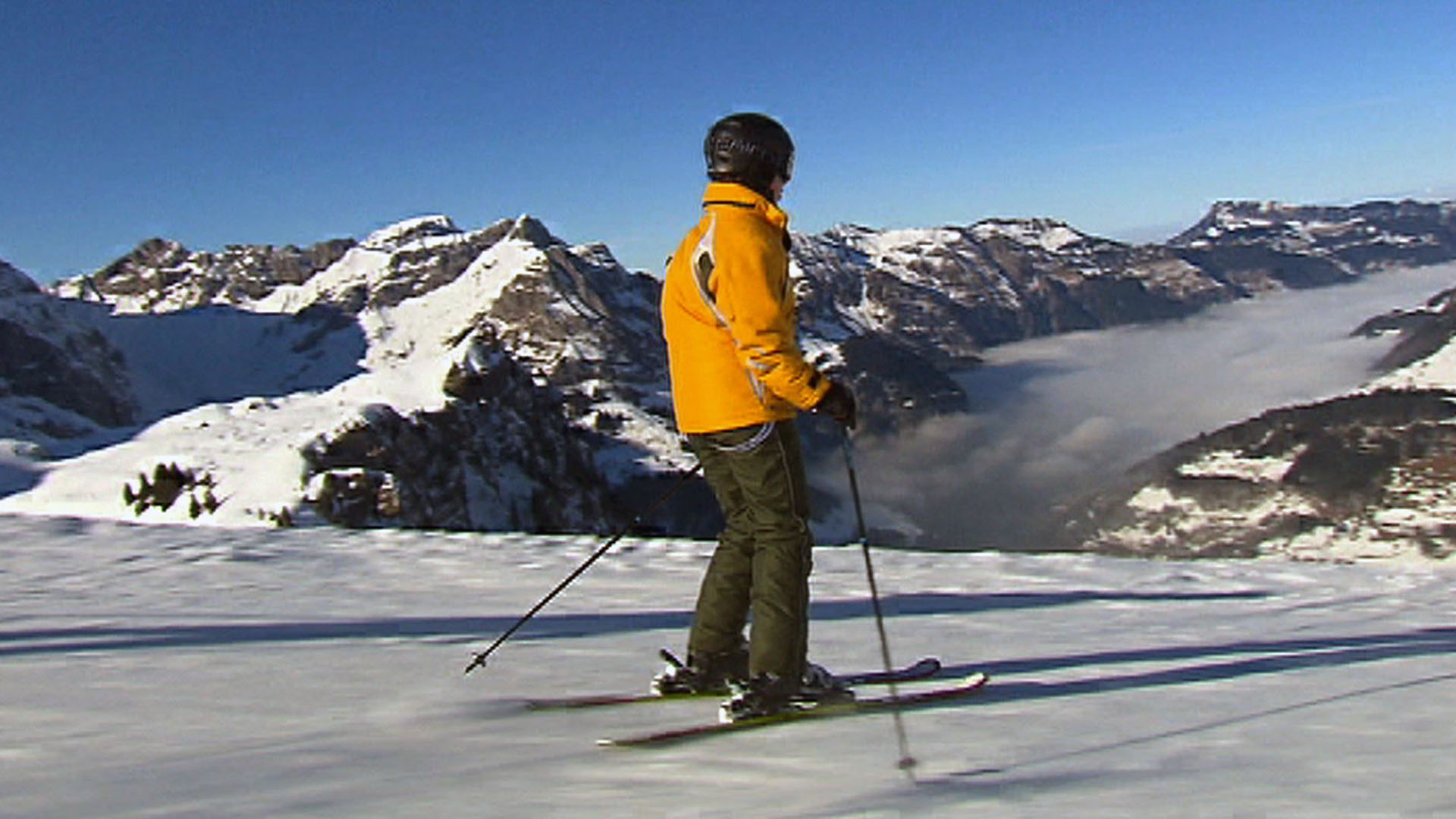Youth ski decline threatens future of sector

Where have all the young people gone? A quiet crisis is emerging in Swiss snow sports, prompting much soul-searching among stakeholders. To ensure the future of winter tourism, the school ski camp is a tradition Switzerland cannot afford to lose.
“You’ve got to be 100% on duty from 6am to 11pm, ensure discipline and be there for children who are ill or homesick.” Primary school teacher Urs Weibel runs ski camps for children at his school but, as he tells swissinfo.ch, it is a struggle.
On top of looking after the children, “you have to find a good location, put together a good programme, organise enough minders and manage the kitchen”.
The Swiss school term that runs from January to Easter traditionally included a residential ‘ski week’ when teachers would accompany groups of pupils to the mountains to practise skiing and snowboarding. Participation was often compulsory. But faced with the extra responsibility and lack of interest from non-skiing pupils, the teacher’s unofficial role as snow sports advocate is wearing thin.
Weibel still finds the effort rewarding, but his school, which used to run camps for several classes every year, now organises just one class group per winter season, with the more modest aim that every child has the chance to try snow sports once.
Lost generation?
The most recent figures from the Federal Office for Sport, which through its youth sports promotion agency Jugend & Sport has a role in delivering most youth ski camps, show a fall of more than 20% in the number of camps that took place between 2005 and 2011.
This ski camp in canton Obwalden attracted just a quarter of the eligible students.

More
Why fewer school classes hit the slopes
Even more startling is the Switzerland Tourism estimate that 85% of the children of immigrants, so-called Secondos, do not ski. That’s 170,000 potential snow sports enthusiasts between the ages of five and 24 missing from the slopes, not just this year but for decades to come.
A recent publicity campaign by Arosa Tourism enlisted the help of Kosovar-Swiss football star Xherdan Shaqiri to entice more second and third-generation immigrants to the mountains. Shaqiri and his brothers tried out cross-country skiing, sledging and curling. He used his popular Facebook page, already with close to 900,000 likes, to share some snaps of the day.
The winter tourism market, which relies on Swiss residents for half of its guests, is seeing a decline across the board – skier days, turnover and overnight stays (see infobox) – while the age profile of skiers and snowboarders shows a marked decline in the 20 to 29 age group.

“If things continue in this direction the domestic market of the future will be eroded. Cable cars do four fifths of their turnover in the winter – they are the motor of the mountain tourist economy. But this is not only an economic question, we are talking about a cultural asset that is worth preserving,” Andreas Keller of the Swiss cable car umbrella organisation Seilbahnen Schweiz told swissinfo.ch.
Call to action
Policymakers and stakeholders are well aware of the problem, and efforts are under way to reverse the trend. Last September the House of Representatives accepted a proposal to introduce a compulsory subsidised annual snow sports day for all secondary schools. The motion is now before the Senate.
Meanwhile new sports promotion legislation in force since October 2013 provides for an increase in the state subsidy for participants in Jugend & Sport camps from CHF6.70 ($7.35) to CHF7.60 per person per day.
The feasibility of a proposed national snow sport centre to promote and operate youth ski camps is being assessed. Nine possible locations for the centre have been evaluated.
This week Switzerland Tourism, Swiss Ski, Seilbahnen Schweiz and the State Secretariat for Economic Affairs (SECO) came together at the invitation of the Federal Office for Sport to draw up a plan of action on the issue.
The participants want to make things easier for schools by developing affordable one-day and residential packages for school groups and by launching a national coordination platform next winter where these deals would be visible.
The focus, according to Christophe Lauener of the Federal Office for Sport, has to be at the local level – helping teachers, schools and communities put snow sports back on the agenda.
Obstacle course
The challenge is to find practical ways to overcome the obstacles to organising and participating in ski camps, which used to be the backbone of Swiss skiing culture.
These disincentives are many and varied. Even the weather is a factor. With snow falling more sparsely on the plains where the majority of the population lives, there is less motivation to pursue winter sports and people have to travel further to access good snow conditions.
The choice of alternative leisure activities has also expanded. And of course there is the question of cost. Skiing and snowboarding are expensive sports that require a high outlay.
The problem goes beyond Swiss borders. The International Ski Federation (FIS) recognises the decline in youth skiing and snowboarding and runs its own ‘Bring Children Back to Snow’ campaign, which includes World Snow Day for children. More than 600 events took place in 35 countries this year.
“We have increasingly focused on countering the decline in participation in snow sports, especially among the young. World Snow Day [January 19] seeks not only to give the children memories for a lifetime but also hopes to help revive the numbers in snow sports participation,” FIS president Gian Franco Kasper writes on the federation website.
Changing times
Lilo Lätzsch of the Zurich Teachers Association remembers camps being oversubscribed in her own school days 20 years ago. The Zurich secondary school where she now teaches offers just one annual ‘snow day’.
Participating children are not obliged to ski or snowboard; they can also do other snow activities such as ice sculpture or building igloos.
“We thought about it a lot and we are going ahead with it, while giving pupils the option not to take part. Four out of my class of 20 have declined to come along.”
In Lätzsch’s view, the problem with ski camps does not lie in the organisation beforehand, but in the demands of the week itself. “In Zurich we get great support in organising a camp. A division of the city’s sports department takes care of logistics and the teachers only have to show up and join in.”
It would help if more trained winter sports specialists were on hand to run activities on the slopes and provide technical support, she said.
With financial backing from SECO, Seilbahnen Schweiz has introduced special cut-price packages with logistics support this winter for 500 school groups. At the same time the cable car group is calling for the reintroduction of a compulsory snow sports week in schools.
“If we want Swiss people in the mountains in 20 or 30 years’ time, we have to act now,” Keller said.
Skier days per winter season:
Down 12% between 2004/05 (28.1 million) and 2011/12 (24.7 million)
Winter season traffic revenue (cable cars)
Down 8% between 2004/05 (CHF806 million) and 2011/12 (CHF741 million)
Source: Seilbahnen Schweiz

In compliance with the JTI standards
More: SWI swissinfo.ch certified by the Journalism Trust Initiative












You can find an overview of ongoing debates with our journalists here . Please join us!
If you want to start a conversation about a topic raised in this article or want to report factual errors, email us at english@swissinfo.ch.